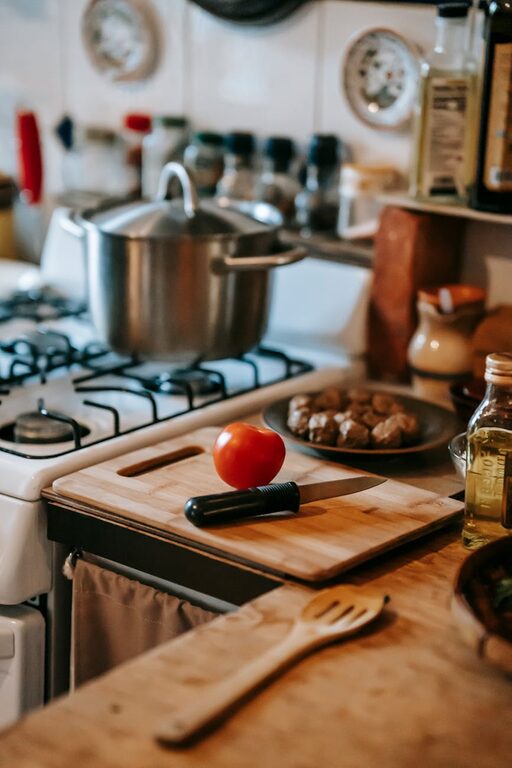Planning meals around pantry staples is a smart way to make cooking easier, reduce grocery trips, and minimize food waste. Whether your pantry is stocked with beans, grains, canned tomatoes, or spices, these ingredients can form the basis of many delicious dishes. In this post, we’ll explore practical strategies to help you plan meals using what you already have, plus creative recipe ideas and storage tips.
Why Use Pantry Staples for Meal Planning?
Pantry staples are non-perishable or long-lasting ingredients that you keep on hand for quick meals. Using these items as the foundation for your meal planning has several benefits:
– Convenience: You can prepare meals without last-minute grocery runs.
– Cost Savings: Buying staples in bulk is often cheaper.
– Less Waste: Planning around existing ingredients means fewer unused foods.
– Versatility: Many pantry staples can be combined in a variety of ways.
Common Pantry Staples to Keep
Before diving into meal planning, it’s good to know which ingredients are versatile and store well. Here are some essentials to consider for a well-stocked pantry:
– Grains: rice, pasta, quinoa, oats
– Legumes: canned or dried beans (black beans, chickpeas, lentils)
– Canned Goods: tomatoes, coconut milk, broth
– Baking Essentials: flour, baking powder, sugar
– Oils and Vinegars: olive oil, vegetable oil, apple cider vinegar, balsamic vinegar
– Herbs and Spices: salt, pepper, garlic powder, dried oregano, cumin, chili flakes
– Nuts and Seeds: almonds, sunflower seeds, chia seeds
– Condiments: soy sauce, mustard, peanut butter, honey
Having a variety of these on hand sets you up for a wide range of meals.
How to Plan Meals from Pantry Staples
1. Take Inventory of Your Pantry
Start by checking what you already have. Organize cans, jars, bags, and boxes so you can quickly see and remember your options. Write down key ingredients or snap a photo to refer to when planning.
2. Choose a Meal Framework
Pick a basic dish type to build around, such as:
– Stir-fries using rice or noodles as a base
– Soups and stews with beans and canned tomatoes
– Pasta dishes with simple tomato or olive oil sauces
– Salads topped with nuts, seeds, and dressings made from pantry staples
3. Mix and Match Ingredients
Experiment by combining different staples. For example:
– Lentils + rice + canned tomatoes + spices = a hearty stew
– Chickpeas + olive oil + garlic powder + lemon juice (if available) = quick hummus or salad topping
– Pasta + canned tomatoes + dried oregano + chili flakes = a simple pasta sauce
4. Incorporate Fresh or Frozen Additions
If you have fresh vegetables or frozen produce, add them to your pantry-based meals to boost flavor and nutrition. Even simple things like an onion, carrot, or a handful of frozen spinach can transform a dish.
5. Plan for Leftovers and Batch Cooking
Make larger batches to enjoy leftovers for lunches or quick dinners. Foods like soups, chili, and grain bowls reheat well and often taste better the next day.
Recipe Ideas to Get You Started
Lentil and Tomato Stew
– 1 cup dried lentils (rinsed)
– 1 can diced tomatoes
– 1 tsp cumin
– 1 tsp garlic powder
– 3 cups vegetable broth (or water)
– Salt and pepper to taste
Simmer lentils with tomatoes, spices, and broth until lentils are tender. Serve over rice or with crusty bread.
Pantry Pasta Aglio e Olio
– 8 oz pasta
– 1/4 cup olive oil
– 3 cloves garlic, thinly sliced (optional)
– 1/2 tsp chili flakes
– Salt and pepper
– Sprinkle of dried parsley or oregano
Cook pasta. Meanwhile, heat olive oil and garlic until fragrant, then add chili flakes. Toss pasta in oil mixture and season. Easy and flavorful!
Chickpea Salad Wrap
– 1 can chickpeas, drained and mashed slightly
– 2 tbsp olive oil or mayo
– 1 tsp mustard
– Salt, pepper, and herbs like parsley or dill
– Optional: lemon juice or vinegar
Mix ingredients, then serve as a filling for wraps or sandwiches.
Tips for Maintaining Your Pantry
– Rotate Stock: Place newer items at the back and older ones at the front.
– Label Expiry Dates: Use washi tape or markers to note dates on jars and cans.
– Keep a Running Shopping List: Add to your list when staples get low.
– Organize by Category: Group grains, canned goods, spices separately.
Final Thoughts
Planning meals from pantry staples encourages creativity and simplifies cooking. By knowing your supplies, choosing versatile frameworks, and experimenting with flavors, you can create satisfying meals any day of the week. Plus, you’ll save money and reduce waste — a win-win for you and your kitchen!
Why not challenge yourself to make your next three meals entirely from pantry staples? You might be surprised how delicious and easy it can be. Happy cooking!

